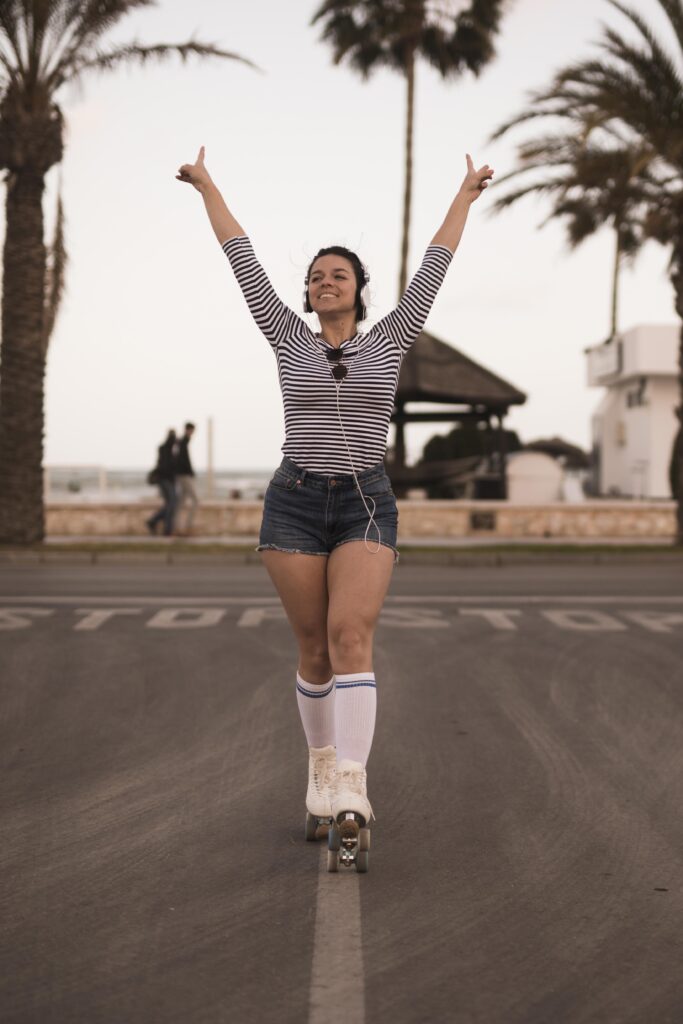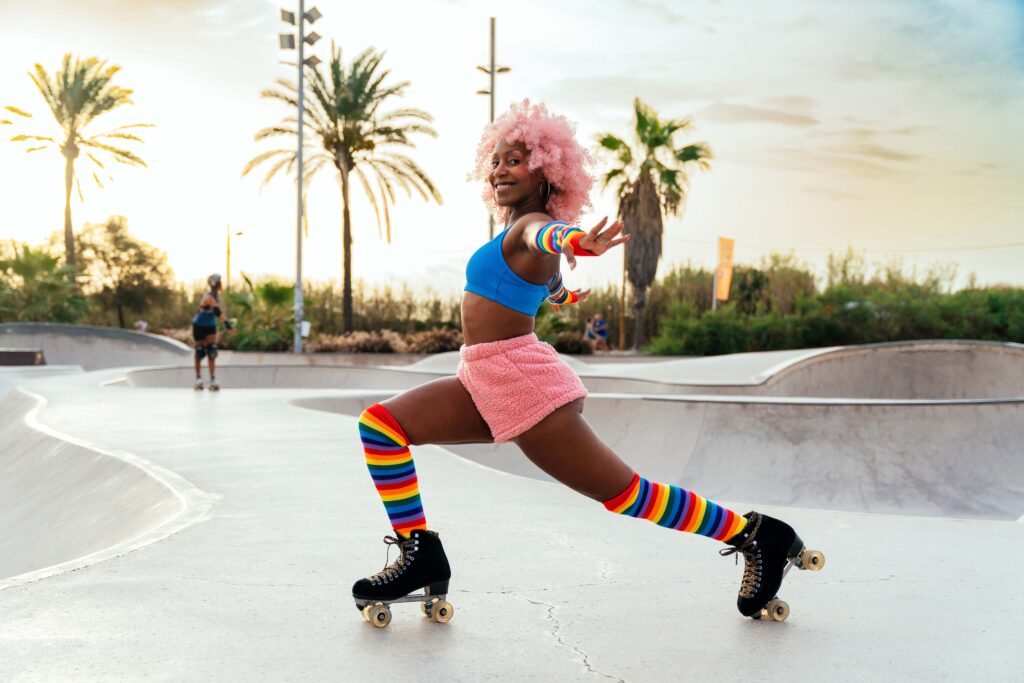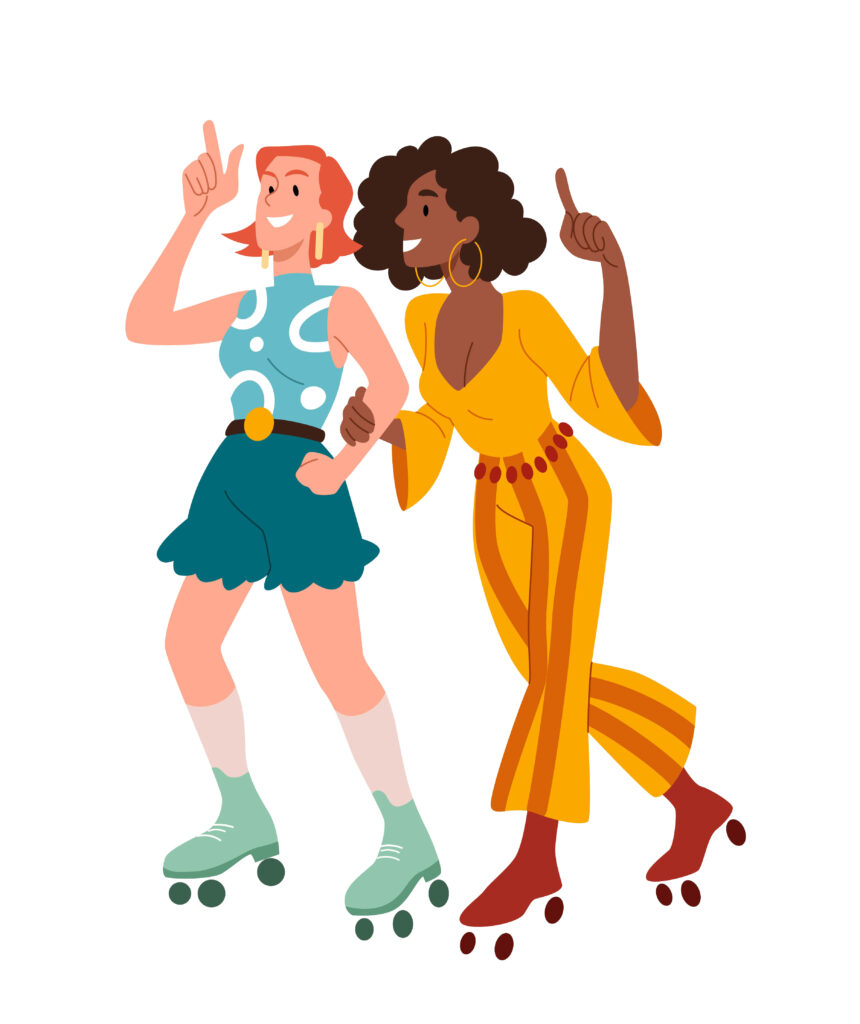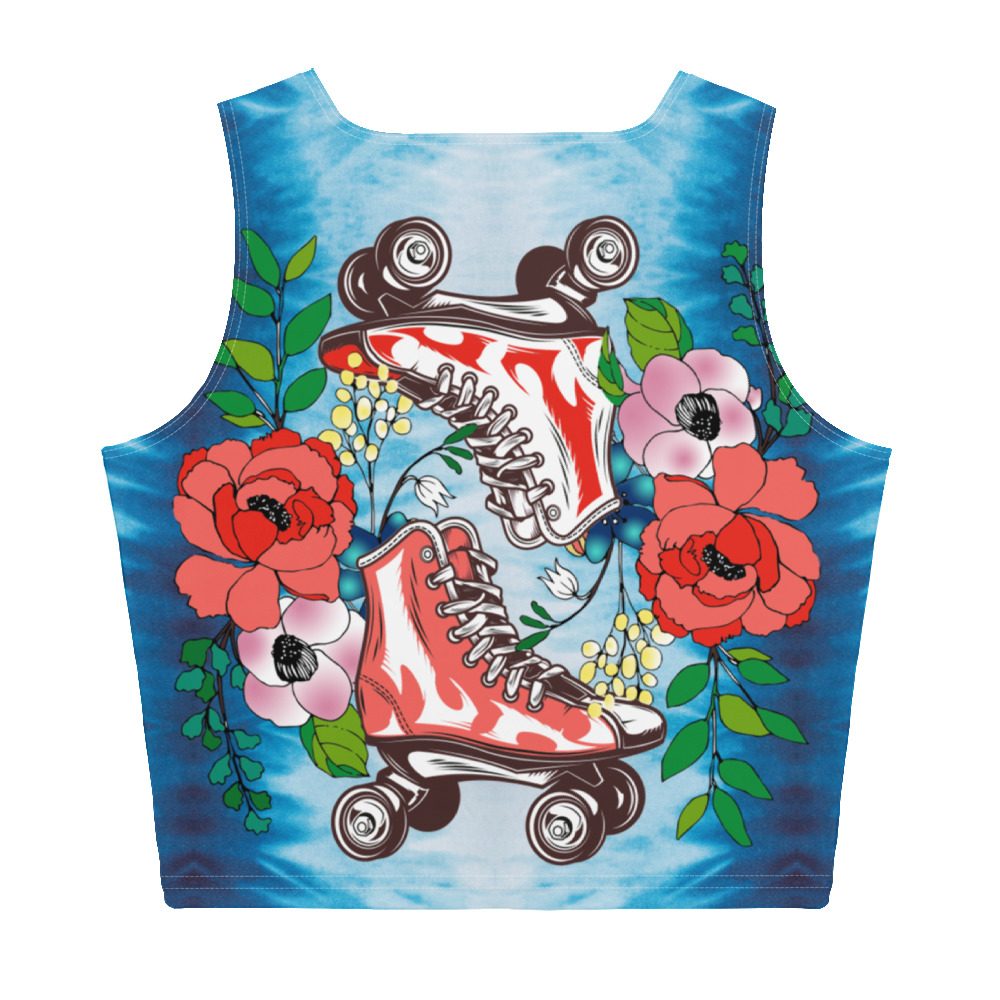The posture and gaze of a roller skater play essential roles in their performance, stability, and safety. Looking up while skating, as opposed to looking down, has several advantages that relate to human biomechanics, proprioception, and long-term health:

Balance & Stability: Balance on roller skates is achieved through a combination of visual cues, vestibular input (from our inner ear), and proprioceptive feedback (our sense of the relative position of one’s own parts of the body). When a skater looks down, they restrict their visual field and primarily focus on their feet or the ground immediately in front of them. This limits their ability to use visual cues from the broader environment to maintain balance.
Body Alignment: Our head is a heavy part of our body. When we look down, especially with the forward lean typical of someone learning to skate, the head moves forward of the center of gravity. This anterior shift can lead to a compensatory curve in the upper back and an increased lordotic (inward) curve in the lower back. Over time, maintaining this posture can lead to muscle imbalances, strain, and even structural changes to the spine.

Efficient Movement: Proper posture, with the head up and shoulders back, allows for optimal engagement of the core muscles. This not only protects the spine but also provides a stable base from which to generate movement. Looking down tends to disengage these core muscles, which can reduce the efficiency of movement, tire the skater out faster, and potentially lead to strains or injuries.

Environmental Awareness: Roller skating safely requires awareness of one’s surroundings. Hazards like cracks, debris, other skaters, or pedestrians can appear suddenly. Looking up expands the skater’s field of vision, allowing them to anticipate and react to obstacles more efficiently.
Proprioception: This is our body’s ability to sense its position in space. It’s a crucial skill for any activity that requires coordination, like roller skating. Looking down continuously can impair our proprioceptive feedback as we become overly reliant on visual input about our feet’s position. In contrast, looking up and relying on a combination of visual, vestibular, and proprioceptive cues can improve our innate sense of body position and movement.
Neck Strain and Long-term Health: Continuously looking down can lead to what’s often referred to as “text neck” in the context of smartphone use. This posture can lead to chronic neck pain, tension headaches, and even degenerative disc issues over time. While roller skaters might not be in this posture as frequently as someone constantly checking their phone, the principle remains that maintaining such a position is not optimal for neck health.
Psychological Factors: There’s a psychological component to posture and gaze direction. Looking forward and up is associated with confidence, while looking down might reflect uncertainty or fear. By training oneself to look up, a skater might also foster a more positive and confident mindset, which can enhance their skating experience.
Exercises To Try:
When you step forward with your left leg your right arm swings forward in consequence. This promotes the normal rotations that we should see while walking and skating.
Supination, pronation, supination is a rotation that happens through the foot as we move. So when we skate we want to do things that promote this rotation. The first place it starts is where you’re looking: Your eyes dictate the position of your head and your neck. If you’re looking down while moving you are limiting the amount of rotation you are trying to perform.
Try this: look out as far as you can and rotate your torso normally. Do the same thing looking down. You’ll notice it will feel a little bit stiffer and restricted; and that’s because when you look down your body produces more internal rotation. Internal rotation is associated with increased muscle activity. Increase muscle activity is associated with less ability to rotate.
Try this: Hold up hand make fist and stiffen wrist, try circling your wrist. It doesn’t move as well as when your hand is relaxed and circling. Apply this same postural principle while skating by keep your body aligned and head up.
In conclusion, looking up while roller skating is crucial for maintaining balance, ensuring proper biomechanical function, preventing injuries, and ensuring optimal awareness of the environment. Proper posture and gaze direction can greatly enhance the roller skating experience, making it safer and more enjoyable. Think about looking as far out at the horizon as you can. Notice what is going on in the external environment. This will help you keep your head up so you can promote rotation through your spine.
